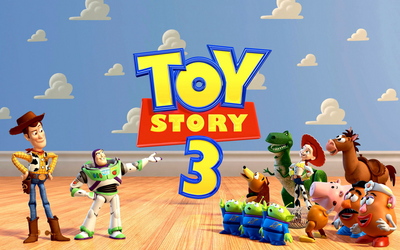 A lot of people have asked me “So what did you think of ‘Toy Story 3’? Was it really that good?” Yes, it really was. Really.
A lot of people have asked me “So what did you think of ‘Toy Story 3’? Was it really that good?” Yes, it really was. Really.
But two things stand out. (Warning, spoilers ahead!)
The first struck me because I saw the movie on its opening weekend, on the day before Father’s Day, so it was hard for me not to notice a yawning hole in the movie’s middle. Put bluntly: there are no fathers. The entire “Toy Story” franchise, in fact, unfolds in a world without dads. Andy, the little boy who becomes a young man over the course of the series, owns the menagerie of toys, and it’s clear that he’s being raised by his mother. The moviemakers never explain why – and, in fact, the incomplete family itself fades into the background as the toys take over the story. Could this be one reason Andy becomes so attached to Woody and Buzz? Are they (at least in his imagination) surrogate dads – pint-sized role models of courage, honor and integrity? Manhood in miniature? I have to wonder.
And wonder, actually, is what brings me to the second thing. Because at bottom, “Toy Story 3” is really about wonder — specifically, the wonder of storytelling.
Near the end of the film, Andy finds a shy little girl who inherits his beloved toys -and the scene where he introduces her to them is enough to make strong men weep. (Pardon me, while I blow my nose. Sniff.) In that moment, Andy has discovered a kindred spirit: another kid without a dad, but one, like him, with a crazy and extravagant imagination — the kind of imagination that will find new adventures for the toys, with new stories to tell.
The movie that begins with an elaborate sequence inside Andy’s imagination ends on a note of sweet expectation. You can’t escape the hopeful feeling that there are many more Toy Stories waiting to be told, as long as there are children to love the toys, and keep them going. (An aside: There’s also a hint that the greatest story, and greatest adventure of all, is life itself. I loved that the last shot of “TS3 “is the first shot of the original film: a blue sky dotted by clouds. But in the first film, it’s a sky painted on Andy’s bedroom wall. Here, it’s the real sky of the real world – or, at least, Pixar’s real world — suggesting limitless adventures out there that are awaiting the little boy who grew up, and moved on.)
In a way, the TS franchise is all about the joy of storytelling, and the magic of myth-making. The wizards of Pixar have managed to create a plausible world of plastic and felt and tin, and made it come exuberantly to life. This is no small thing. Not only that, but they have done all this in the service of something truly beautiful and, even, sacred: the celebration of child-like wonder. Nurturing that wonder, the movies suggest, helps to ensure that more stories will be told.
And that may be the most heartfelt achievement of the “Toy Story” films. The TS franchise has reminded us of something easily taken for granted — the power of imagination and whimsy and play. It’s a power that every five-year-old with a plastic doll appreciates.
Thank God, the good people at Pixar appreciate it, too.

